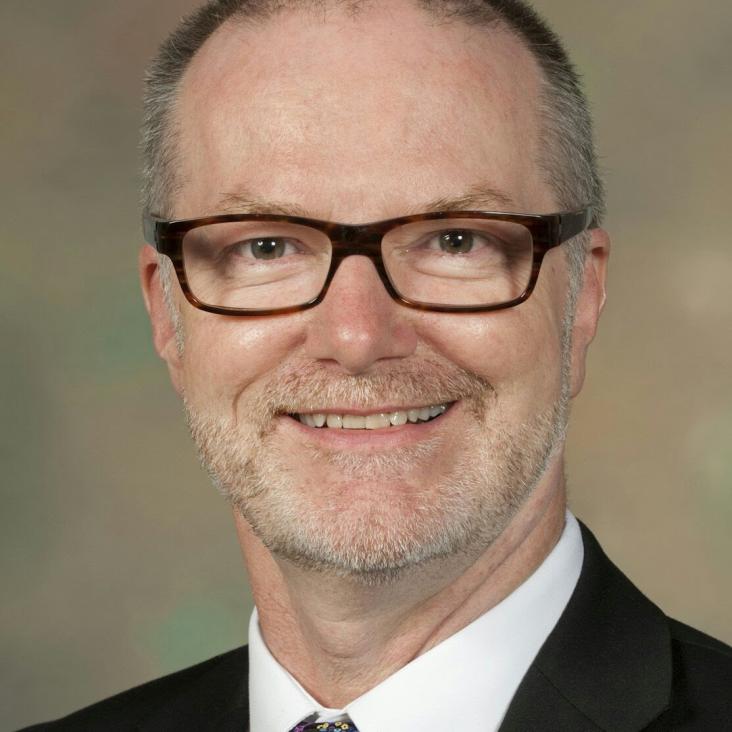Peter Norreys is Professor of Physics and was appointed Professor of Inertial Fusion Science at the University of Oxford in 2013.
He graduated from Royal Holloway College, University of London, in 1989 and spent one year as a Japan Society for the Promotion of Science Post-Doctoral Fellow at Osaka University Japan. He joined the Rutherford Appleton Laboratory in 1990 on his return to the United Kingdom and has been involved in the study of relativistically intense laser-plasma interactions since then.
The international effort to develop inertial fusion to the stage that it could be used as an energy source has been a multi-decade endeavour. It requires the 1000-fold compression of matter to densities and temperatures that mimic the compressional effect of gravity in the Sun. By irradiating and imploding a small spherical shell containing hydrogen isotopes (deuterium and tritium), either directly using intense nanosecond-duration ultra-violet laser beams or indirectly by immersing the shell in an intense bath of re-radiated X-rays, the shell rapidly compresses. At maximum compression, the fuel’s own inertia - the tendency of matter to resist sudden acceleration - permits enough delay between implosion and following explosion for the strong but short-range nuclear force to dominate and fuse large numbers of isotope pairs into helium nuclei. During each isotope-pair fusion event, a sudden and intense release of energy occurs because the rest mass of the two fusion products (a helium nucleus and an energetic neutron) is less than the combined masses of the two fusion ions (a deuteron and a triton). The greater the number of fusion reactions, the larger the total energy generated beyond that expended to drive the compression in the first place. This heat, if captured in a surrounding blanket, can drive a steam turbine that generates electrical power.
In order to be commercially competitive, from the mid-21st century onwards, inertial fusion power plants must compete on costs with renewable energy sources (wind, solar, geothermal etc.) in the electricity market, demanding further substantial reductions in the size, and associated capital costs, of laser-drivers. To this end, Norreys devoted himself during his career to conducting a series of fundamental experiments to characterise energy transport in solid-density and compressed targets using petawatt-class lasers, pioneering many first studies of electron and ion beam acceleration, neutron beams and ultra-bright X-ray sources. His scientific papers have focused on high energy density plasmas, among them forty-five Physical Review Letters, three articles in Science, and eighteen Nature-family articles, supported by authorship of the supporting grants to the Research Councils, with eminent colleagues in the UK, EU, US and Japan. He has a strong collaboration with colleagues from LULI (Laboratoire pour l’Utilisation des Lasers Intenses) at Ecole Polytechnique in France. Norreys co-founded Living Optics, a highly successful computer vision company, in 2020 with his current and former graduate students Mr Robin Hsiao-Wu Wang and Dr Muhammad Firmansyah Kasim (along with Dr Steve Chappell and Mr Zachary Yerushalmi) for ultrafast- and hyperspectral- imaging applications. He leads a diverse and inclusive research group, with researchers from the UK across the world, researching a wide range of topics in inertial fusion and extreme field science.
Peter Norreys was awarded the bilateral Institute of Physics / French Physical Society's 2025 Fernand Holweck Medal and Prize “for his outstanding contributions to fundamental studies of high energy density plasmas using high power and petawatt-class lasers, including fast ignition inertial fusion, particle beam acceleration and ultra-bright X-ray sources.” Before then, he received the American Nuclear Society's 2023 Edward Teller Medal Award "for pioneering research in the use of high-intensity lasers for producing unique electron, ion, and x-ray beams for scientific applications in fast ignition fusion, advanced accelerators and probing of plasmas", the Institute of Physics' 2013 Payne-Gaposchkin Medal and Prize for his original contributions to relativistic laser-plasma interaction physics, the American Physical Society’s 2006 Award for Excellence in Plasma Physics Research for his contributions to inertial fusion science and, as UK team leader, the 2007 Daiwa Adrian Prize for UK-Japan collaborative investigations into new areas of high energy density science. He is currently William Penney Fellow of AWE, a Fellow of the Institute of Physics and of the American Physical Society. He is a visiting Professor to Imperial College London and Shanghai Jiao Tong University. He was Individual Merit Fellow of the Rutherford Appleton Laboratory and member of the Science and Technology Facilities Council's Senior Leadership Team between 2007-2021.
Peter Norreys chairs the Department of Physics' Awards Committee and serves as one of the elected members of the Physics Management Committee. He is currently co-ordinator of the Oxford-Imperial-Warwick "Centre for Postgraduate Training in Plasma Physics and High Energy Density Science" graduate course. Peter Norreys is Supernumerary Fellow to University College where he is Dean of Degrees.


